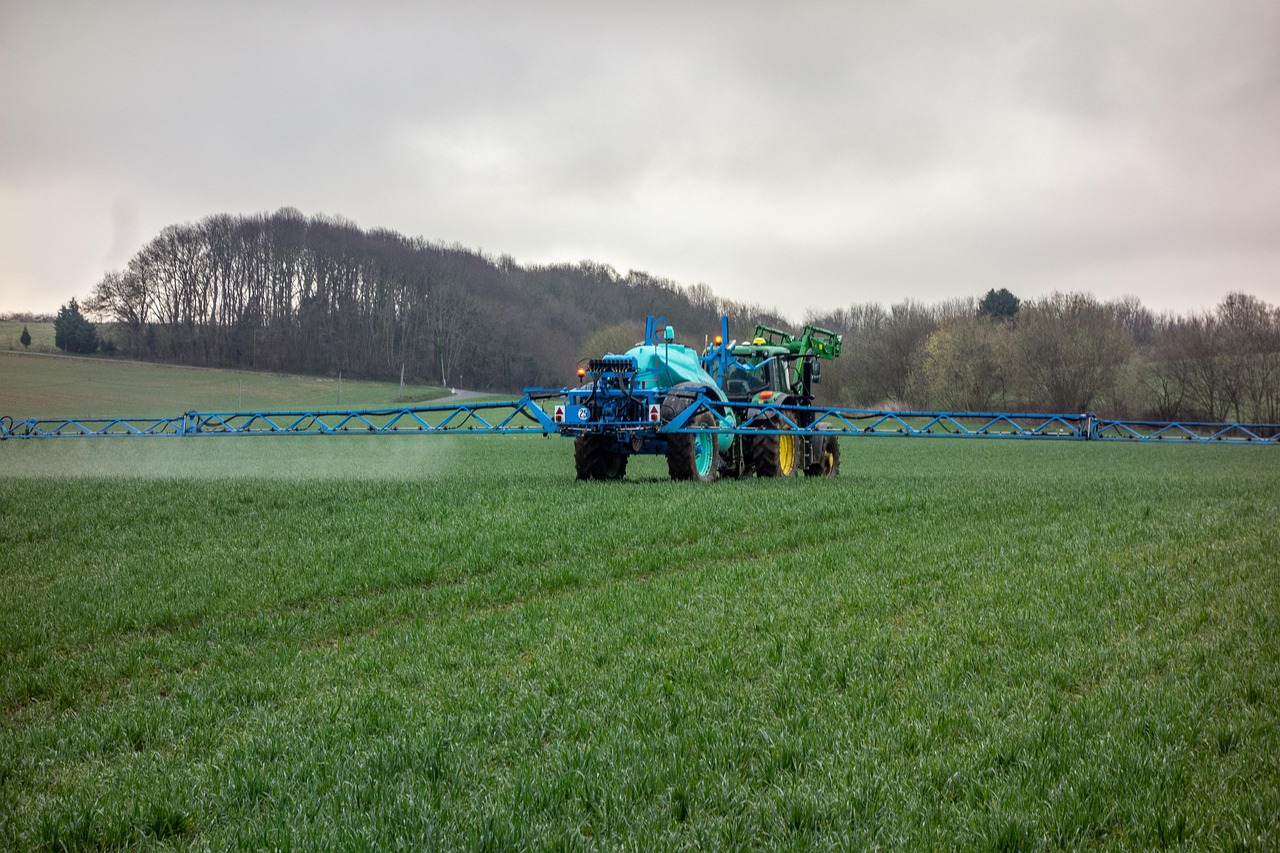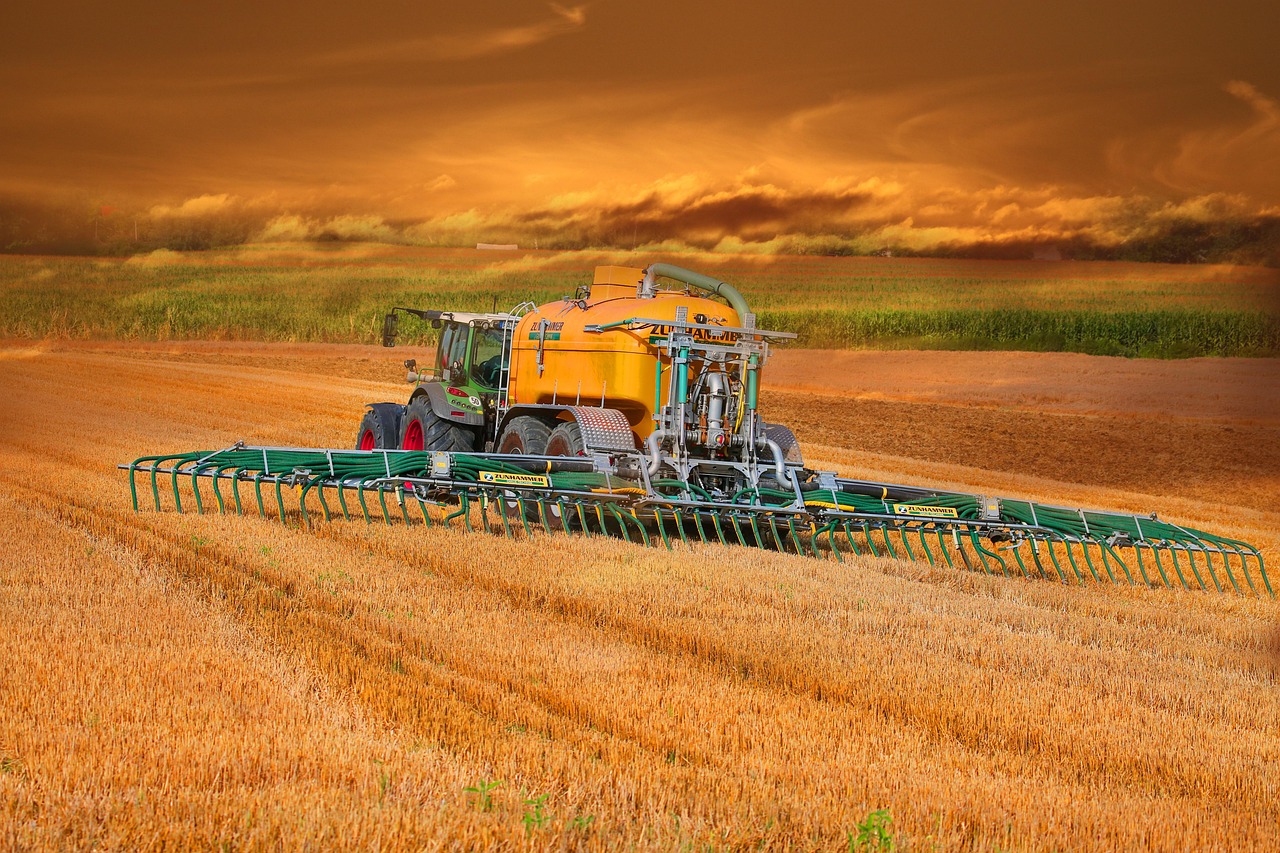Choosing the right container fertilizers involves understanding the specific needs of your plants and the nutrient requirements for healthy growth. Look for balanced formulations that offer essential macronutrients and micronutrients, and consider slow-release options for sustained feeding.
Understanding Container Fertilizers

Container fertilizers are specially formulated nutrients designed for potted plants. Unlike garden soil, which often has a variety of nutrients, potting mixes can quickly become depleted. Therefore, using the right fertilizer is crucial for ensuring that container plants thrive throughout their growing season.
When selecting fertilizers for containers, it is important to consider several factors, including the type of plants you are growing, their growth stage, and the specific nutrients they require. Many container plants, such as flowers, vegetables, and herbs, have different nutrient needs. Understanding these requirements helps in making informed choices about fertilizer products.
Types of Container Fertilizers
There are several types of container fertilizers available on the market today. Each type has unique characteristics that can benefit your plants differently. Below are some common types:
- Granular Fertilizers: These are solid particles that release nutrients slowly over time. They are easy to apply and ideal for long-term feeding.
- Liquid Fertilizers: These fertilizers dissolve in water and are quickly absorbed by plants. They are great for fast results but require more frequent application.
- Slow-Release Fertilizers: Designed to provide nutrients over an extended period, these fertilizers are convenient for busy gardeners.
- Organic Fertilizers: Made from natural materials, these fertilizers improve soil health and are environmentally friendly.
Nutrient Requirements
Plants require a mix of macronutrients and micronutrients for optimal growth. The primary macronutrients include nitrogen (N), phosphorus (P), and potassium (K). Each plays a vital role in plant health:
| Nutrient | Role in Plant Growth |
|---|---|
| Nitrogen (N) | Essential for leaf and stem growth; promotes lush, green foliage. |
| Phosphorus (P) | Supports root development and flower/fruit production; important for energy transfer. |
| Potassium (K) | Aids in overall plant health; helps regulate water and nutrient uptake. |
In addition to these macronutrients, plants also require micronutrients such as magnesium, calcium, and iron. While these nutrients are needed in smaller amounts, they are equally important for healthy plant development.
Selecting the Right Fertilizer
When choosing a container fertilizer, look for products that provide a balanced ratio of N-P-K. A common ratio is 10-10-10 or 20-20-20, indicating equal parts of nitrogen, phosphorus, and potassium. However, certain plants may require specific ratios based on their individual needs.
Additionally, consider the timing of fertilization. Young plants may benefit from a higher nitrogen content to promote leafy growth, while flowering plants may need more phosphorus to encourage blooms. The growth stage of your plants will influence the type of fertilizer you should select.
Application Techniques
The effectiveness of container fertilizers also depends on how they are applied. Follow these guidelines to ensure your plants receive the right amount of nutrients:
- Read Instructions: Always follow the manufacturer’s instructions regarding application rates and frequency.
- Water Before Fertilizing: Ensure the soil is moist before applying any fertilizer to prevent root burn.
- Avoid Over-Fertilization: Too much fertilizer can harm plants. It’s better to under-fertilize than to overdo it.
By understanding these principles and selecting the right products, gardeners can significantly improve the health and productivity of their container plants.
Common Mistakes When Using Container Fertilizers
Even experienced gardeners can make mistakes when applying fertilizers to container plants. Understanding these common pitfalls can help you avoid them and ensure the best results for your plants. Here are some frequent errors to watch out for:
- Neglecting Soil Testing: Failing to test the soil can lead to either over-fertilization or under-fertilization. Regular soil tests help determine existing nutrient levels and pH, guiding your fertilizer choices.
- Ignoring Plant Signs: Plants often exhibit signs of nutrient deficiency or excess. Yellowing leaves, stunted growth, or burnt tips can indicate issues that need addressing.
- Using the Wrong Fertilizer Type: Not all fertilizers are suitable for every plant. Choosing a fertilizer that does not match the specific needs of your plants can hinder their growth.
- Inconsistent Application: Inconsistent fertilization can lead to nutrient imbalances. Establishing a regular feeding schedule based on plant needs is crucial.
Understanding Fertilizer Labels
Fertilizer labels contain valuable information that can help you make informed decisions. Familiarizing yourself with these labels is essential for selecting the right product. Here are key components to look for:
- N-P-K Ratio: As mentioned earlier, this ratio indicates the percentage of nitrogen, phosphorus, and potassium in the fertilizer. For example, a 10-20-10 ratio means it contains 10% nitrogen, 20% phosphorus, and 10% potassium.
- Ingredient List: Check for additional nutrients and organic matter included in the fertilizer. Organic fertilizers may contain composted materials that improve soil structure.
- Application Instructions: Always review how often and how much to apply. Some fertilizers are designed for frequent use, while others are formulated for less frequent application.
Organic vs. Synthetic Fertilizers

When choosing fertilizers, you will encounter two primary categories: organic and synthetic. Each has its advantages and disadvantages. Understanding these differences will help you select the best option for your gardening style.
Organic Fertilizers
Organic fertilizers are derived from natural sources, such as plant or animal matter. They release nutrients slowly and improve soil health over time. Here are some benefits of using organic fertilizers:
- Environmentally Friendly: Organic fertilizers are less likely to harm beneficial microorganisms in the soil.
- Soil Health: They improve soil structure and increase its ability to retain moisture and nutrients.
- Sustainable: Many organic fertilizers are renewable resources, making them a sustainable choice for long-term gardening.
Synthetic Fertilizers
Synthetic fertilizers, on the other hand, are chemically manufactured. They provide nutrients quickly and are often more concentrated than organic options. Consider these advantages:
- Quick Results: Synthetic fertilizers can rapidly deliver nutrients to plants, leading to faster growth.
- Targeted Nutrients: They allow for precise control over nutrient ratios, making it easier to fulfill specific plant needs.
- Easier Application: Many synthetic fertilizers come in pre-measured forms or easy-to-use liquid concentrates.
Seasonal Considerations
The timing of fertilization is crucial for maximizing plant health. Different seasons bring varying nutrient needs based on plant growth cycles. Here’s how to adjust your fertilization schedule throughout the year:
Spring
As plants emerge from dormancy in spring, they require a boost of nutrients to support new growth. Use a balanced fertilizer with a higher nitrogen content to promote lush foliage.
Summer
During the summer, many plants enter their peak growth phase. Consider using slow-release fertilizers to provide a steady supply of nutrients over the growing season.
Fall
As temperatures cool, plants begin to prepare for dormancy. A fertilizer lower in nitrogen but higher in potassium can help strengthen roots and prepare plants for winter.

Winter
In winter, many container plants require little to no fertilization since they are not actively growing. However, evergreen plants may benefit from a light application of slow-release nutrients during this time.
By understanding these seasonal adjustments, you can ensure that your container plants receive the appropriate care throughout the year.
Fertilizer Application Methods
Applying fertilizers correctly is as important as choosing the right product. Different application methods can influence how effectively nutrients are absorbed by container plants. Understanding these methods will help you optimize the growth and health of your plants.
Top-Dressing
Top-dressing involves spreading granular fertilizer on the surface of the soil. This method is effective for providing nutrients without disturbing the plant roots. Here’s how to do it:
- Choose the Right Time: Apply top-dressing during the growing season when plants are actively absorbing nutrients.
- Spread Evenly: Use a ratio recommended on the fertilizer packaging, usually around one tablespoon per gallon of potting mix.
- Water After Application: Water the container thoroughly after top-dressing to help dissolve the fertilizer and carry nutrients into the soil.
Diluted Liquid Fertilizers
Liquid fertilizers can be diluted in water and applied directly to the soil or as a foliar spray. This method allows for quick nutrient uptake. Here are steps to effectively use diluted liquid fertilizers:
- Read Dilution Instructions: Follow the manufacturer’s guidelines for mixing fertilizer with water to avoid over-concentration.
- Apply During Active Growth: Utilize this method when plants are growing vigorously, typically in spring and summer.
- Use a Watering Can or Spray Bottle: Apply evenly to avoid burning the plants. A watering can is ideal for soil application, while a spray bottle is suitable for foliar feeding.
Soil Incorporation
Incorporating granular fertilizers into the potting mix before planting ensures that nutrients are available from the start. This method works well for new plantings:
- Mix Thoroughly: Combine the recommended amount of fertilizer with potting soil before planting. A typical ratio can be found on the product label.
- Ensure Even Distribution: Mix well to prevent nutrient hotspots that could lead to uneven growth.
- Plant as Usual: Once incorporated, plant your container plants as you normally would, ensuring proper watering afterward.
Special Considerations for Specific Plants
Certain plants have unique nutritional needs that may require specialized fertilizers. Recognizing these requirements can lead to better results in your container garden.
Flowering Plants
Flowering plants often thrive with fertilizers higher in phosphorus (the middle number in the N-P-K ratio). This nutrient supports blooming and fruiting. When selecting fertilizers for flowering plants, consider:
- Balanced Formulations: Use fertilizers with ratios like 5-10-5 or 10-20-20 during blooming periods.
- Avoid Excess Nitrogen: High nitrogen levels can lead to lush foliage at the expense of flowers.
Vegetables and Herbs
Vegetables and herbs have high nutrient demands, especially during their growing season. To promote healthy growth, consider these tips:
- Use Fertilizers with Micronutrients: Look for products that include micronutrients such as magnesium and calcium, essential for vegetable and herb growth.
- Sustain Nutrient Levels: Opt for a slow-release fertilizer to ensure a consistent supply of nutrients throughout the growing season.
Tropical and Foliage Plants
Tropical plants and those grown primarily for their foliage may need balanced fertilizers with moderate nitrogen levels to maintain vibrant leaves. Consider these aspects:
- Higher Nitrogen Ratios: Fertilizers with a 15-5-15 ratio can effectively support lush foliage growth.
- Frequent Feeding: These plants may benefit from bi-weekly feeding during the growing season, especially when using liquid fertilizers.
Pest and Disease Management

A well-fed plant is often more resilient to pests and diseases. However, over-fertilization can lead to weakened plants that are more susceptible to issues. Here are ways to manage pests and diseases while using fertilizers:
- Maintain Soil Health: Use organic fertilizers when possible to promote beneficial microbial activity in the soil.
- Avoid Over-Fertilization: Monitor nutrient levels carefully to prevent nutrient burn and stress that may attract pests.
- Cultural Practices: Implement good cultural practices like proper watering and spacing to reduce disease pressure.
By considering these various application methods and specific plant needs, gardeners can enhance their container gardening experience, leading to healthier plants and more bountiful harvests.
Advanced Techniques for Container Fertilization
As you gain experience with container gardening, you may want to explore advanced techniques for fertilizing your plants. These methods can enhance plant growth and improve overall garden health. Here are some options to consider:
Foliar Feeding
Foliar feeding involves applying a diluted liquid fertilizer directly to the leaves of plants. This method allows for rapid nutrient absorption and can be particularly beneficial during periods of stress or when plants show signs of nutrient deficiency.
- Use a Fine Mist: Apply the solution as a fine mist early in the morning or late in the afternoon to avoid leaf burn.
- Frequency: Foliar feeding can be done every two to four weeks, depending on the plant’s needs and growth stage.
- Choose the Right Fertilizer: Use a water-soluble fertilizer that contains micronutrients beneficial for your specific plants.
Compost Tea
Compost tea is a nutrient-rich liquid created by steeping compost in water. This organic fertilizer provides beneficial microorganisms and nutrients that promote plant health. Here’s how to make and use compost tea:
- Brewing Process: Combine well-aged compost with water in a container, let it steep for 24-48 hours, and strain the liquid.
- Dilution: Dilute the compost tea with water at a ratio of 1:1 before application to prevent potential over-fertilization.
- Application: Use compost tea as a soil drench or foliar spray to deliver nutrients and beneficial organisms directly to your plants.
Hydroponic Systems
If you’re interested in expanding your gardening techniques, hydroponics could be a fascinating option. In hydroponics, plants grow in nutrient-rich water rather than soil, allowing for precise control over nutrient delivery.
- Nutrient Solutions: A balanced nutrient solution is essential, typically containing all essential macronutrients and micronutrients.
- Monitoring pH Levels: Regularly monitor the pH levels of the nutrient solution to maintain optimal nutrient uptake.
- System Types: There are various hydroponic systems, including deep water culture and nutrient film technique, each with unique benefits.
Sustainable Practices in Container Gardening
Sustainability is an important consideration in modern gardening practices. Here are some ways to make your container gardening more eco-friendly:
- Use Organic Fertilizers: Opting for organic fertilizers not only benefits your plants but also minimizes environmental impact.
- Reduce Plastic Waste: Consider using biodegradable containers or recycled materials to reduce plastic usage in your garden.
- Water Conservation: Implement efficient watering techniques such as drip irrigation to conserve water while providing adequate hydration for your plants.
Final Thoughts
Selecting the appropriate fertilizers for container gardening is vital for promoting healthy plant growth. By understanding the nutritional needs of different plants and utilizing effective application methods, gardeners can foster vibrant and productive container gardens.
Remember that every plant has unique requirements that may change with the seasons. Regular monitoring and adjustments based on growth stages will help you achieve the best results. Whether you choose organic or synthetic fertilizers, consistency and attention to detail are key to successful gardening.
Embrace the journey of container gardening with an open mind. Experiment with various fertilizers and techniques, and don’t hesitate to learn from both successes and challenges. Happy gardening!
